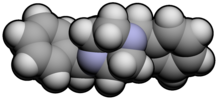
Benzylpiperazine (BZP) is a recreational drug with euphoriant and stimulant properties. The effects produced by BZP are comparable to those produced by amphetamine. Adverse effects have been reported following its use including acute psychosis, renal toxicity and seizures. No deaths have been reported following a sole ingestion of BZP, although there have been at least two deaths from the combination of BZP and MDMA. Its sale is banned in several countries, including Australia, Canada, New Zealand, the United States, the Republic of Ireland, the United Kingdom, Bulgaria, Romania and other parts of Europe.
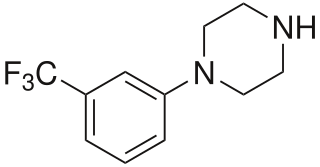
3-Trifluoromethylphenylpiperazine (TFMPP) is a recreational drug of the piperazine chemical class. Usually in combination with benzylpiperazine (BZP) and other analogues, it is sold as an alternative to the illicit drug MDMA ("Ecstasy").

5-MeO-MiPT is a psychedelic and hallucinogenic drug, used by some as an entheogen. It has structural and pharmacodynamic properties similar to the drugs 5-MeO-DiPT, DiPT, and MiPT. It is commonly used as a "substitute" for 5-MeO-DiPT because of the very similar structure and effects.

meta-Chlorophenylpiperazine (mCPP) is a psychoactive drug of the phenylpiperazine class. It was initially developed in the late-1970s and used in scientific research before being sold as a designer drug in the mid-2000s. It has been detected in pills touted as legal alternatives to illicit stimulants in New Zealand and pills sold as "ecstasy" in Europe and the United States.

para-Methoxyphenylpiperazine is a piperazine derivative with stimulant effects which has been sold as an ingredient in "Party pills", initially in New Zealand and subsequently in other countries around the world.

MBZP (1-methyl-4-benzylpiperazine) is a stimulant drug which is a derivative of benzylpiperazine. MBZP has been sold as an ingredient in legal recreational drugs known as "Party pills", initially in New Zealand and subsequently in other countries around the world.
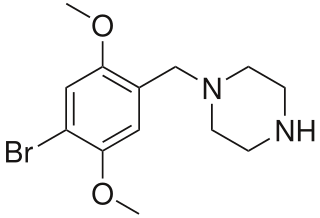
4-Bromo-2,5-dimethoxy-1-benzylpiperazine (2C-B-BZP) is a psychoactive drug and research chemical of the piperazine chemical class which has been sold as a "designer drug". It produces stimulant effects similar to those of benzylpiperazine (BZP).

Betahydroxythiofentanyl (β-hydroxythiofentanyl) is an opioid analgesic that is an analogue of fentanyl.

Ethylphenidate (EPH) is a psychostimulant and a close analog of methylphenidate.

4-Fluoromethamphetamine (4-FMA) is a stimulant drug related to methamphetamine and 4-fluoroamphetamine. It has been reported to be sold as a designer drug, but little is known about its pharmacology or toxicology. Anecdotal user reports however mention a high risk of physical dependence and serious withdrawal symptoms, such as fever and a tendency for dissociation, which last about a week. It was first detected from legal highs sold in Japan in 2006 and became illegal to sell or to possess for the purpose of distribution in Japan in 2008. It was initially reported to be contained as an ingredient in some of the range of party pills sold internationally by the Israeli company Neorganics from around 2006 onwards, but this was later shown to be incorrect and this ingredient was eventually identified as the closely related compound 2-fluoromethamphetamine.

4-Bromomethcathinone is a psychoactive drug and research chemical of the phenethylamine, amphetamine, and cathinone chemical classes. It acts as a serotonin and norepinephrine reuptake inhibitor, but acts more like an antidepressant than a stimulant. It is currently unclear whether the 4-halogenated cathinones share the selective serotonergic neurotoxicity of their corresponding amphetamines.

Flephedrone, also known as 4-fluoromethcathinone (4-FMC), is a stimulant drug of the cathinone chemical class that has been sold online as a designer drug starting in 2008.

2-Aminoindane (2-AI) is a research chemical with applications in neurologic disorders and psychotherapy that has also been sold as a designer drug. It acts as a selective substrate for NET and DAT.

α-Pyrrolidinobutiophenone (α-PBP) is a stimulant compound developed in the 1960s which has been reported as a novel designer drug. It can be thought of as the homologue lying between the two better known drugs α-PPP and α-PVP.
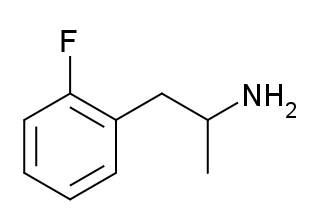
2-Fluoroamphetamine (2-FA) is a stimulant drug from the amphetamine family which has been sold as a designer drug. 2-Fluoroamphetamine differs from 3- and 4-fluoroamphetamine in the position of the fluorine atom on the aromatic ring, making them positional isomers of one another. The replacement of a hydrogen atom with a fluorine atom in certain compounds to facilitate passage through the blood–brain barrier, as is desirable in central nervous system pharmaceutical agents, is a common practice due to the corresponding increase in lipophilicity granted by this substitution.

2-Fluoromethamphetamine (2-FMA) is a stimulant drug of the amphetamine family which has been used as a designer drug. It is purported to possess little recreational value because less euphoria is produced than other amphetamines. It is said to be a functional stimulant with properties similar to lisdexamfetamine.

Methiopropamine (MPA) is a thiophene ring-based structural analog of methamphetamine originally reported in 1942. Chemically it is not a phenethylamine or amphetamine and is not their functional analog either. It originally appeared for public sale in the UK in December 2010 as a "research chemical" or "legal high", recently branded as Blow. It has limited popularity as a recreational stimulant.

4-Methylbuphedrone, is a stimulant drug of the cathinone class that has been sold online as a designer drug.

4'-Methoxy-α-pyrrolidinopentiophenone is a stimulant drug of the cathinone class that has been sold online as a designer drug.
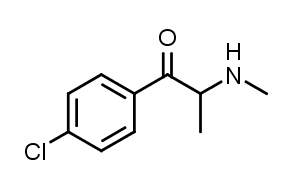
4-Chloromethcathinone is a stimulant drug of the cathinone class that has been sold online as a designer drug.

